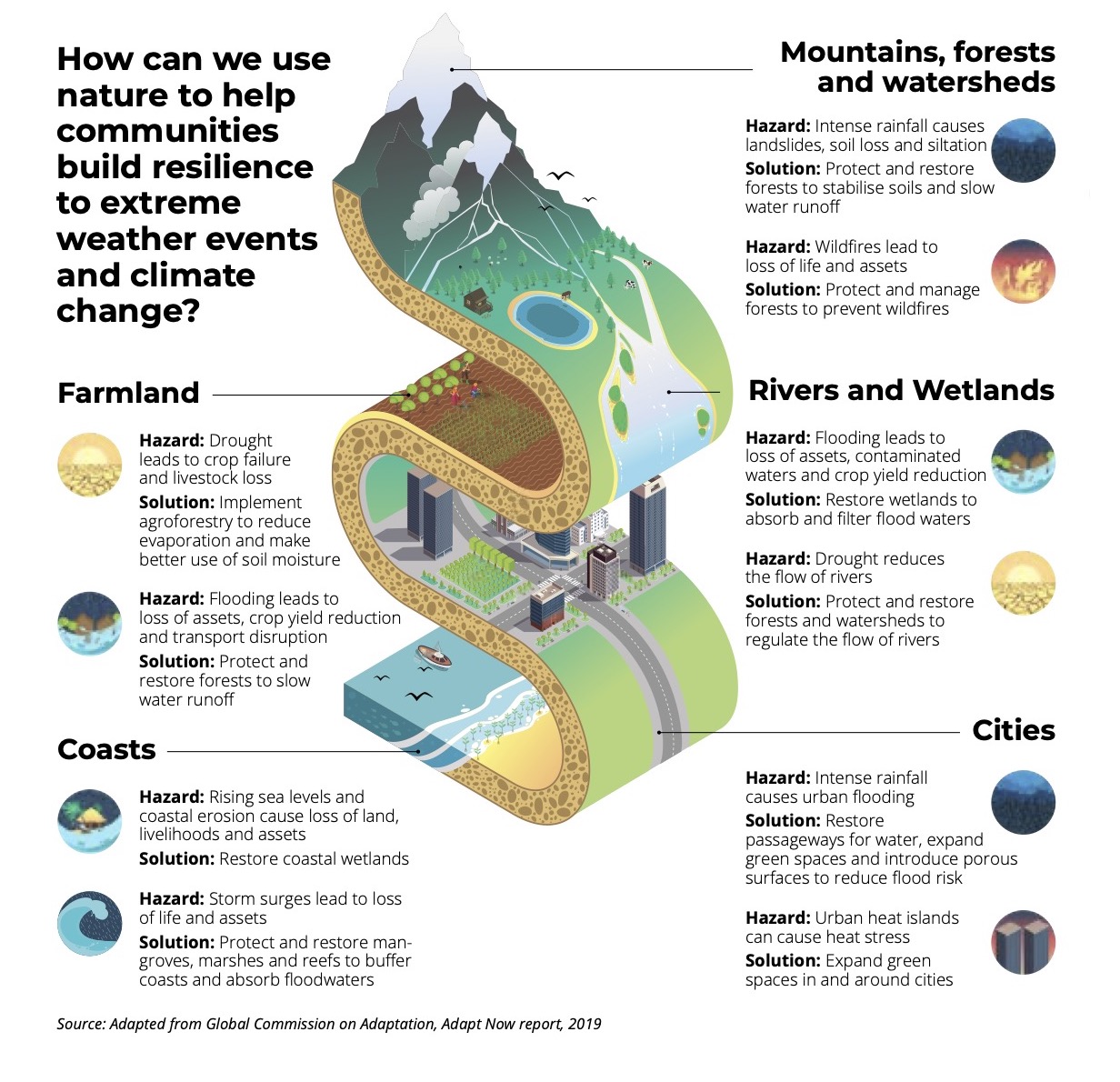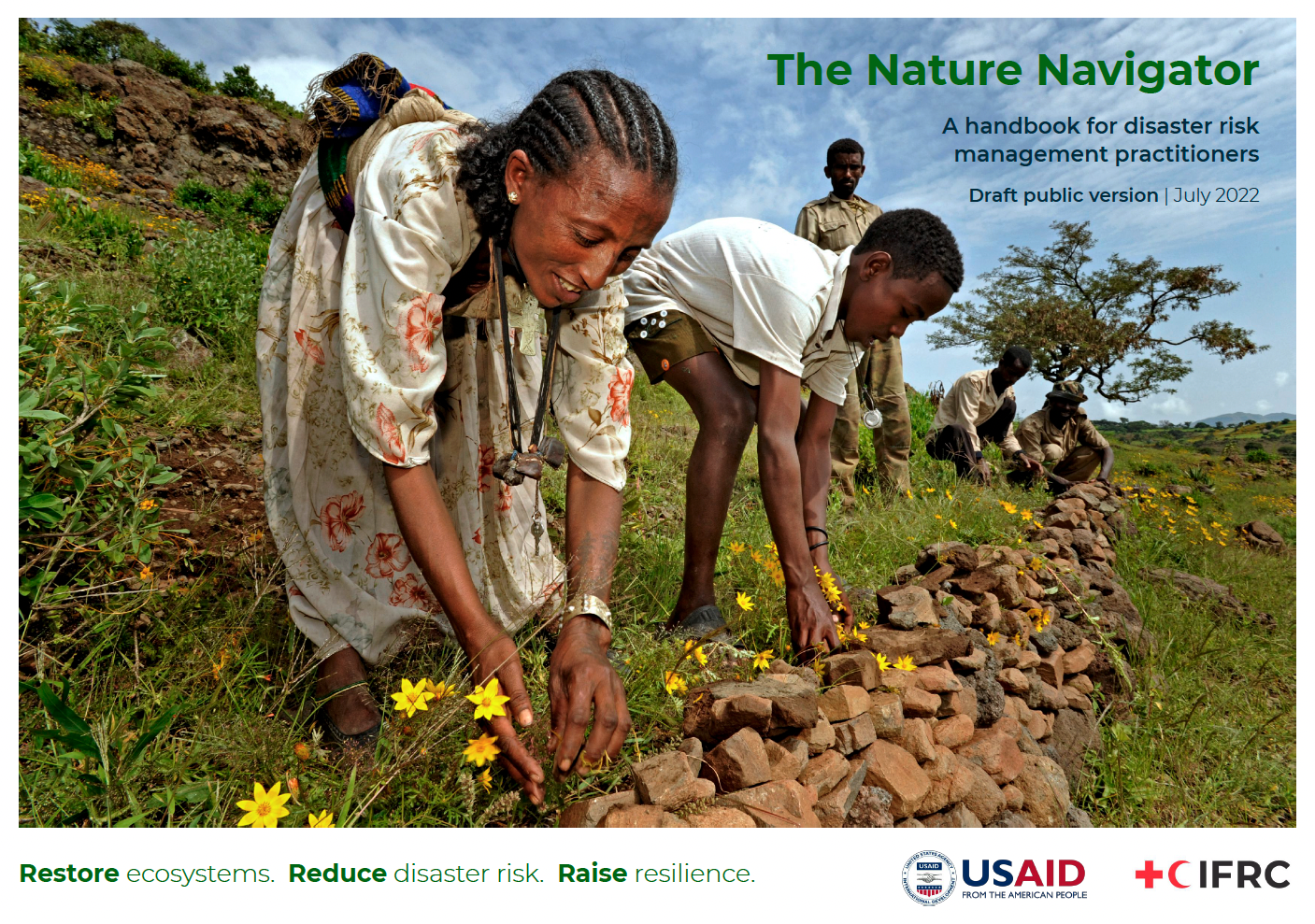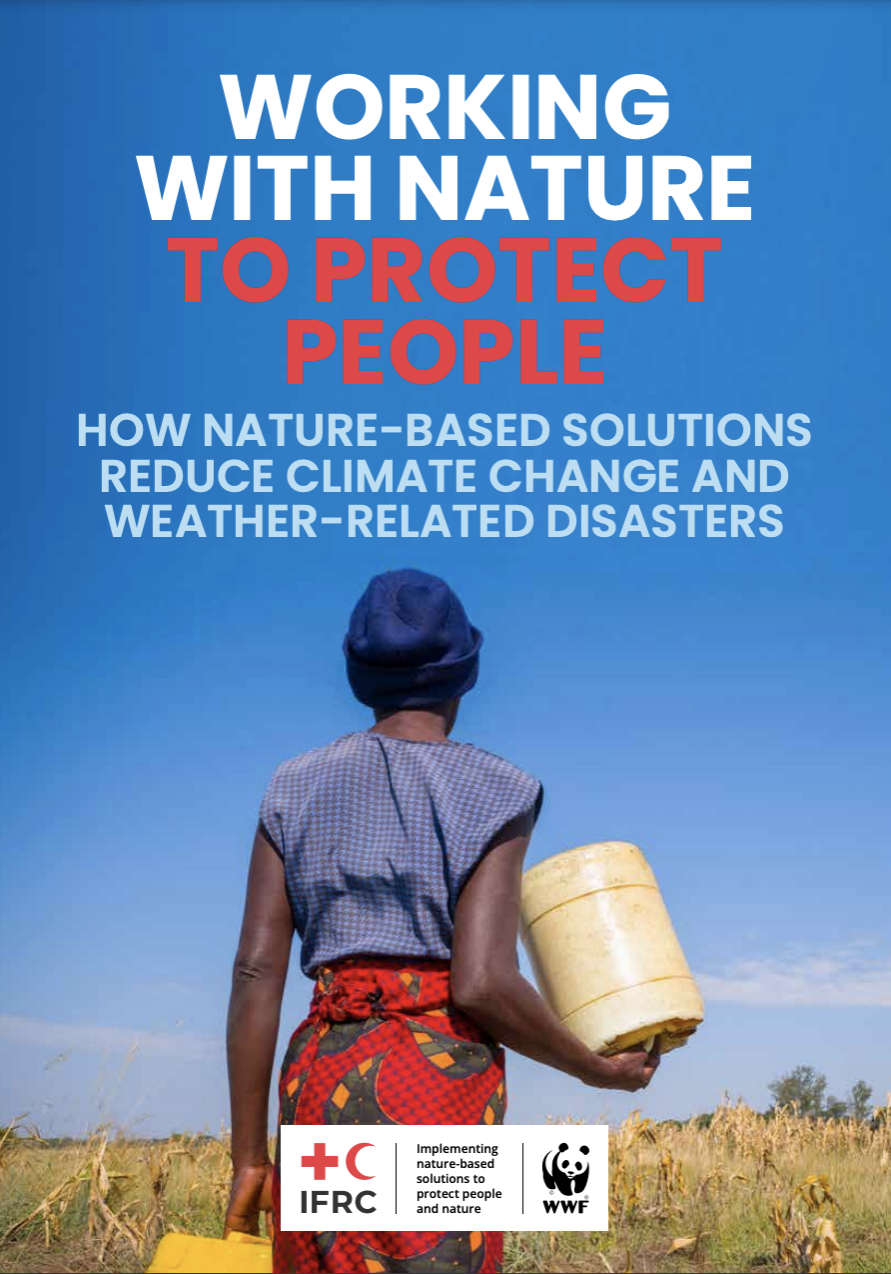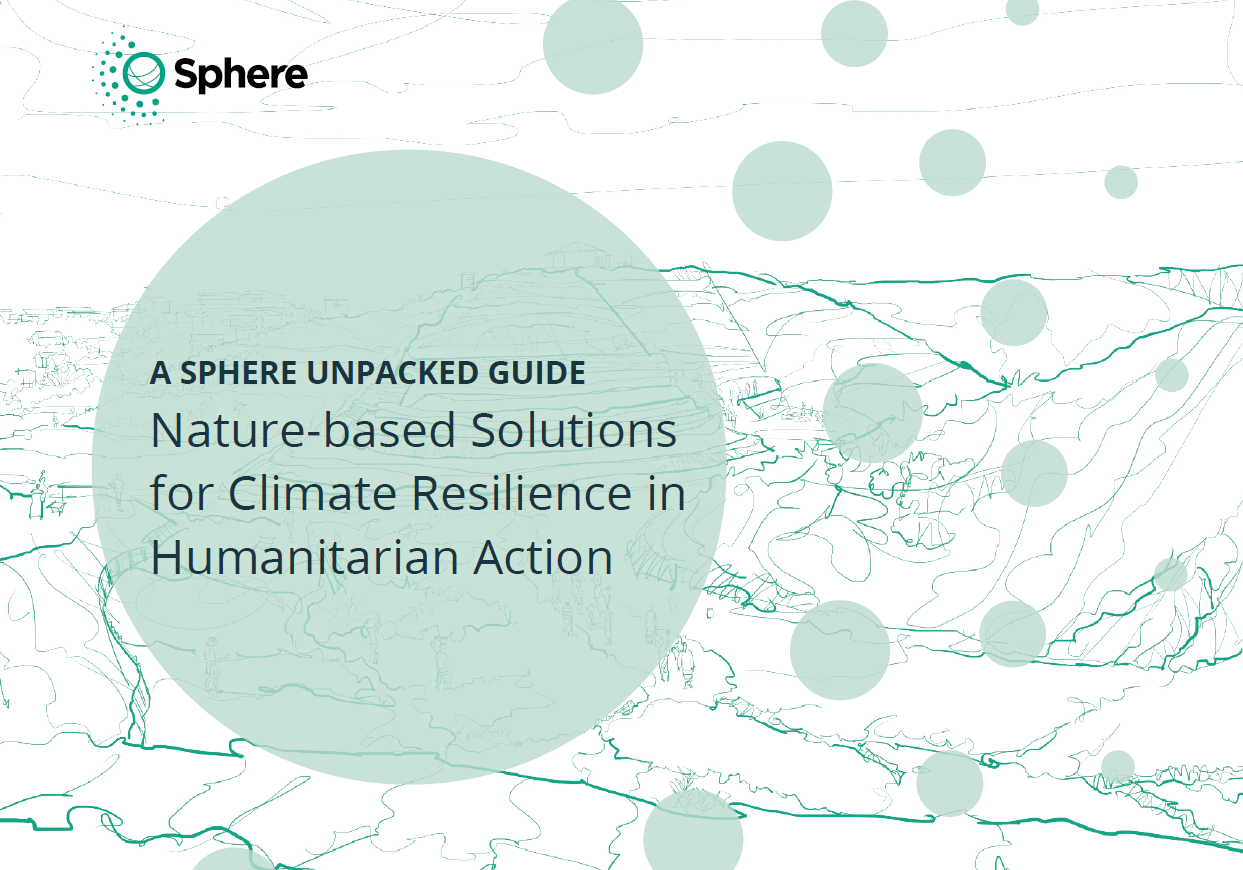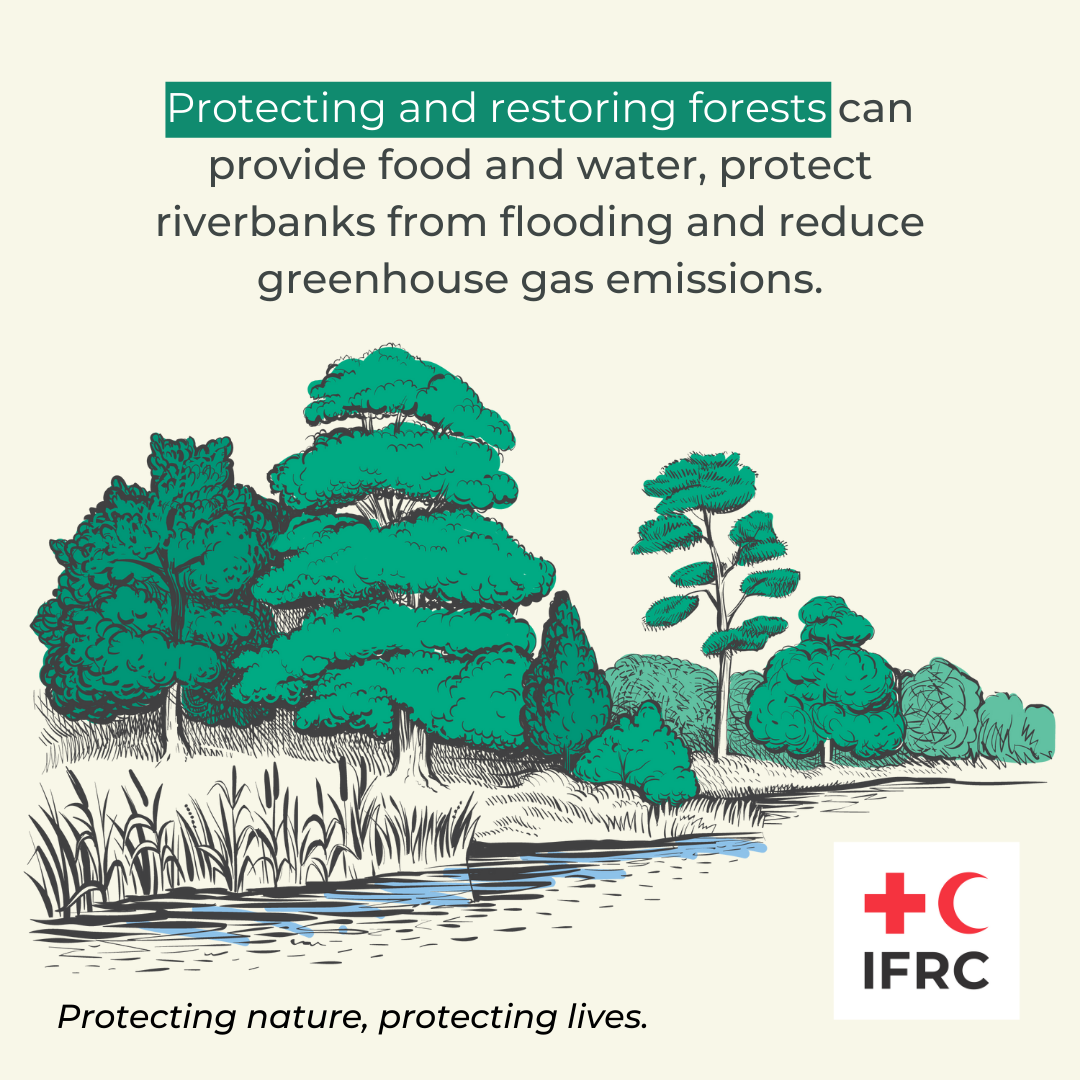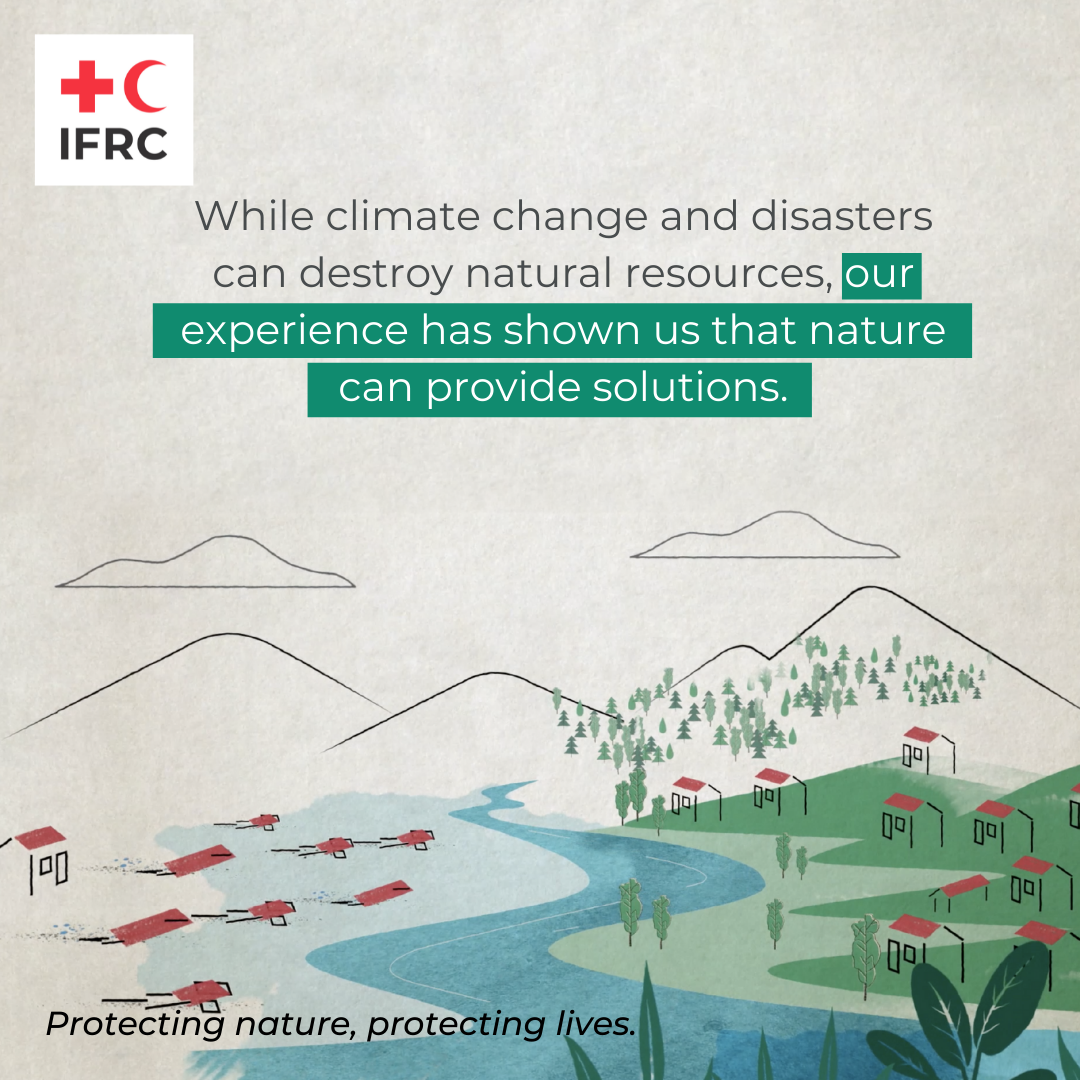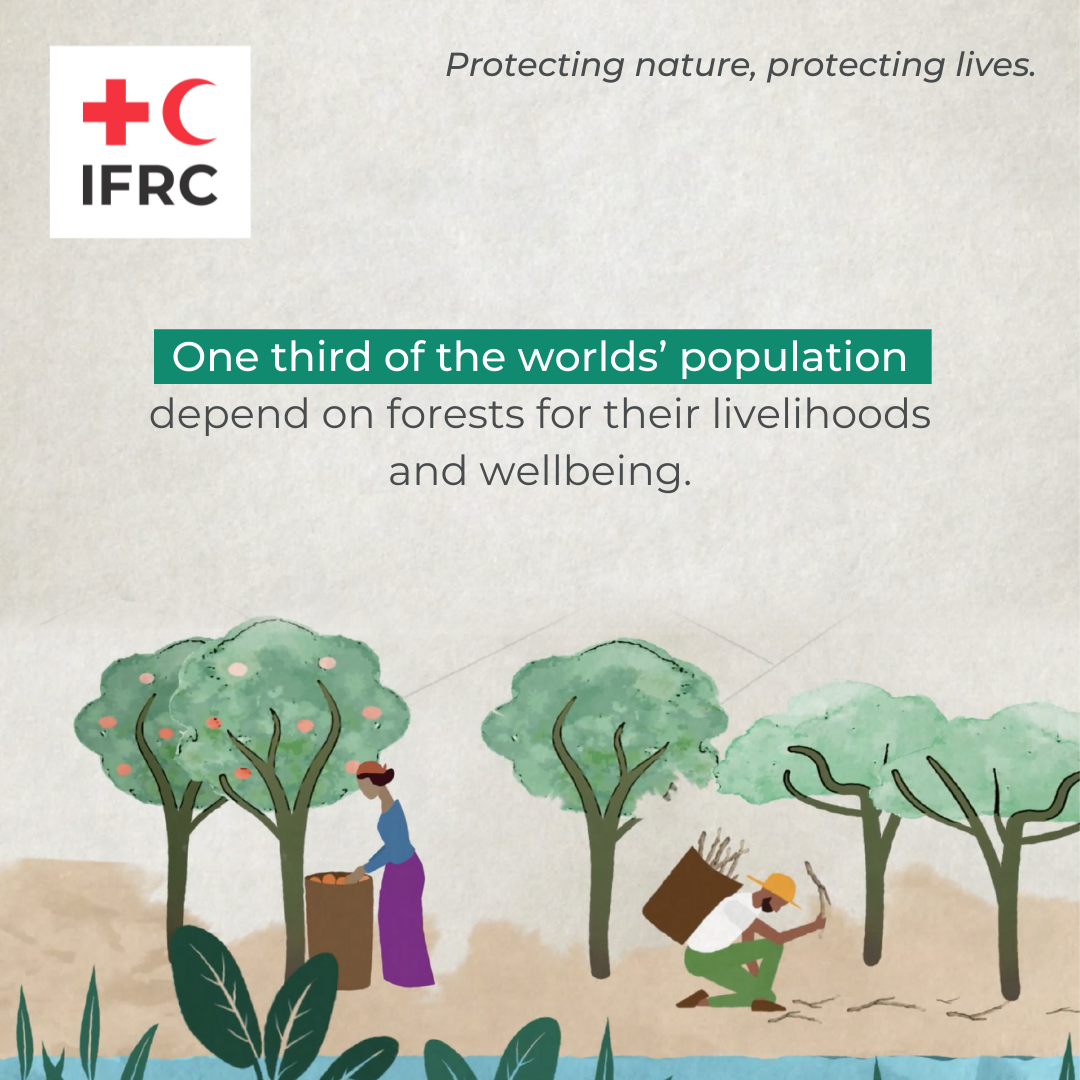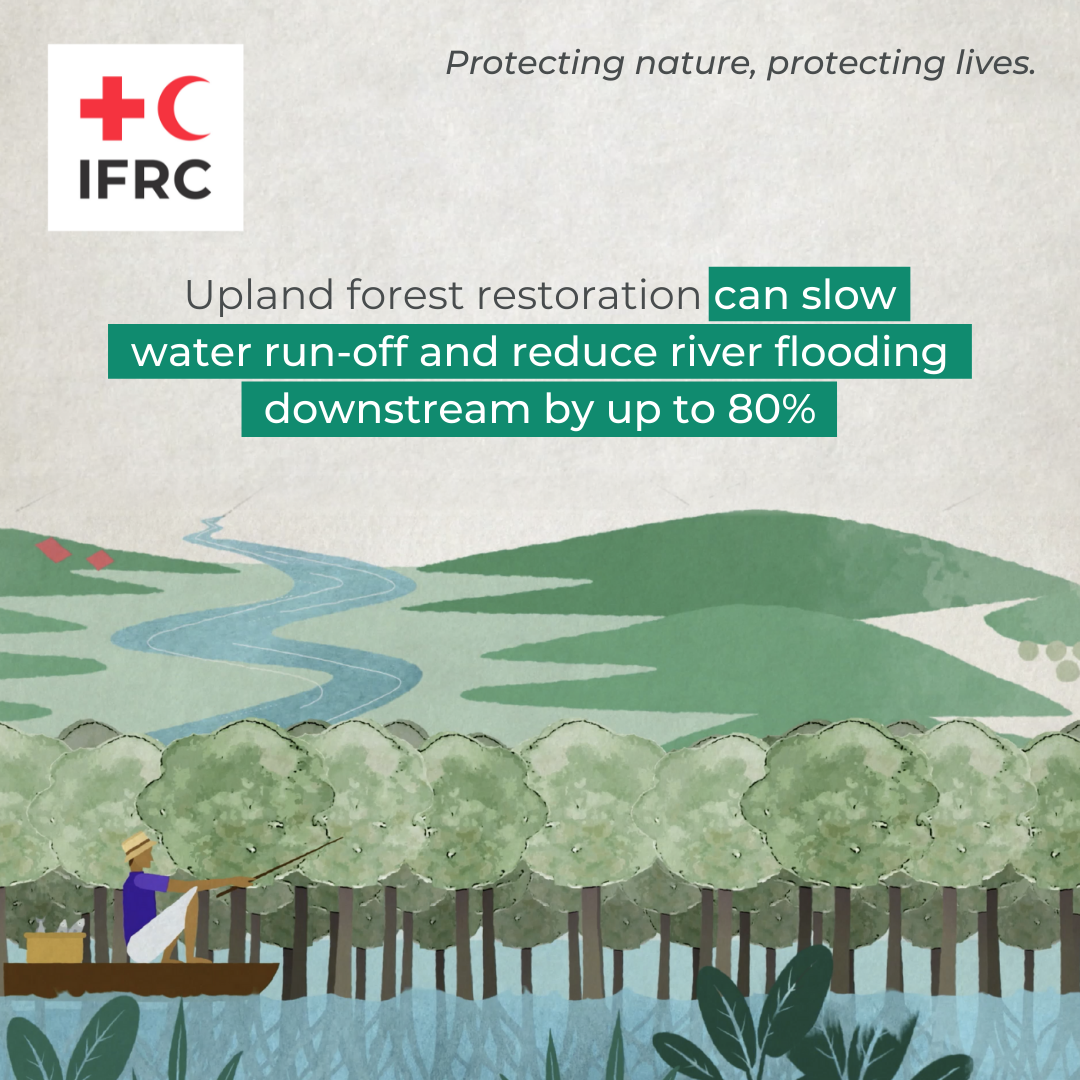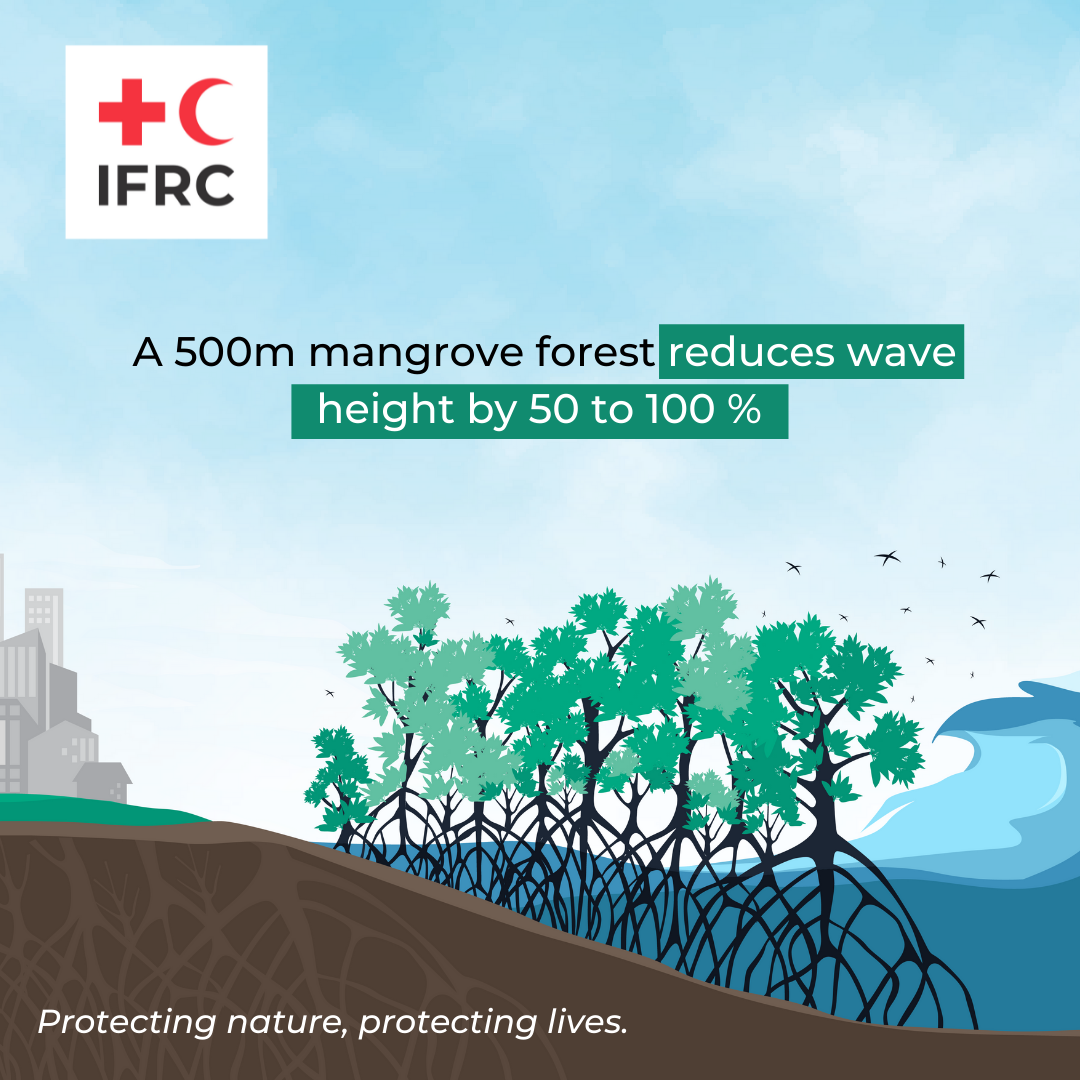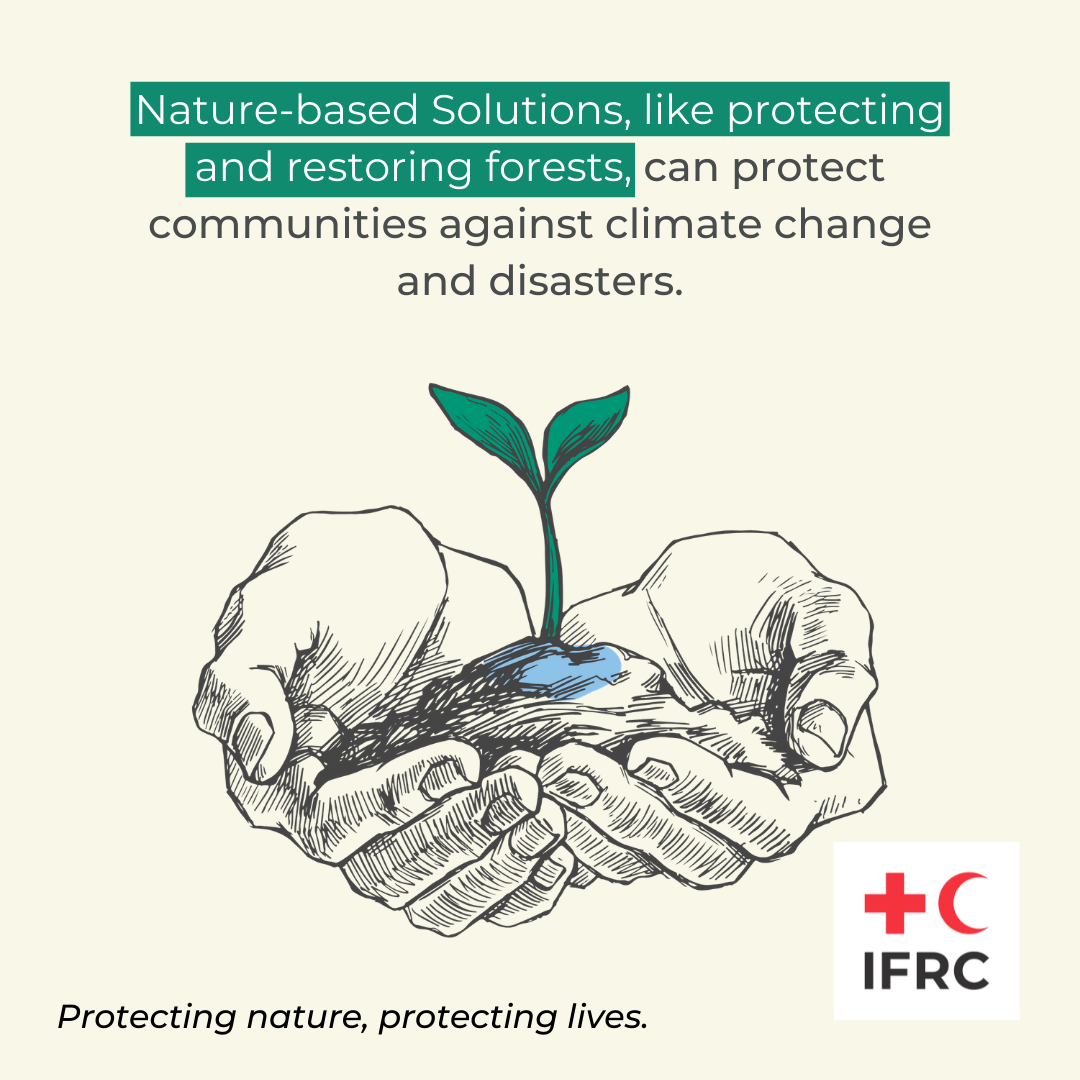RESOURCES
Additional Resources for Nature-based Solutions
Navigate to:
Podcast: Talks 4 Action
Talks 4 Action will bring you on a journey to highlight how Nature is playing an important role from the climate talks at COP26 in Glasgow to the Global Platform for Disaster Risk Reduction next year.
Each Talks 4 Action episode will focus on different ways that Nature-based Solutions contribute to increasing disaster and climate resilience.
IFRC, WWF call for global action to protect nature to save lives and address climate crisis
The report, “Working with Nature to Protect People: How Nature-based Solutions Reduce Climate Change and Weather-Related Disasters” shows how nature-based solutions can reduce the likelihood of climate change and weather-related events occurring. It sets out how lives can be saved by working with nature-based solutions to prevent exposure to these hazards and support vulnerable communities in adapting to and withstanding the dangers of a warming world.

A Sphere Unpacked Guide on Nature-based Solutions
IUCN and IFRC, working in collaboration with partners of the Friends of Ecosystem Based Adaptation (FEBA), the Environment and Humanitarian Action Network, and the Partnership for Environment and Disaster Risk Reduction has worked to develop the publication Nature-based Solutions for Climate Resilience in Humanitarian Contexts – A Sphere Unpacked Guide (The Unpacked Guide) in collaboration with Sphere. This groundbreaking collaboration brings the environmental and humanitarian sectors together, heightens awareness about the role NbS can play in crisis-affected contexts, and consolidates knowledge to strengthen the implementation of NbS in humanitarian action.
Sphere Standards are the most widely recognized and utilized humanitarian standards across the globe. They are used to improve the quality and accountability of the humanitarian sector, used as reference tools by humanitarian agencies, advocacy groups, governments, and donors. The Sphere Handbook has been field-tested over twenty years and is regularly updated to ensure it remains fit for purpose in a changing world.
The Unpacked Guide is primarily designed for humanitarian practitioners working in diverse contexts, such as protracted crises, post-acute shock disaster contexts, or refugee or internally displaced persons settlements. This transdisciplinary guidance may also be of relevance to national headquarters staff and those responsible for interagency coordination and higher-level strategy, and to environmental and recovery practitioners outside of the humanitarian sector. The guide will provide diverse actors with the knowledge and tools to better incorporate NbS into humanitarian action.
The collaborative development of the Unpacked Guide is a crucial step towards transforming humanitarian action through the integration of NbS and environmental safeguarding. In a changing world and a changing climate, it is imperative that the potential of NbS to contribute to humanitarian response is better understood, funded, and implemented on the ground in crisis-affected contexts where it is needed most to improve ecosystem health and human well-being.
The Sphere Nature-based Solutions for Climate Resilience in Humanitarian Action Unpacked Guide can be found here.
Learn more about the Nature-based Solutions in Humanitarian Contexts Working group here.
NbS Key documents
NbS for specific hazards and ecosystems: Guidance
The Nature Conservancy (TNC) published The Blue Guide to Coastal Resilience which provides Disaster Risk Reduction (DRR) planners a step-by-step approach to integrating Nature-based Solutions (NbS) into DRR planning, specifically in coastal areas.
Natural and Nature-Based Flood Management: A Green Guide was developed to support local communities around the world in using natural and nature-based methods for flood risk management.
Nature-based Landslide Risk Mitigation involves the use of plant species to mitigate slope instabilities and provides sustainable, cost-effective and environmentally-friendly approaches for landslide disaster risk reduction.
The Guidance Document is expected to assist professionals involved in landslide risk management activities (scientific staff, practitioners and staff at relevant local authorities) on application of Nature-based Solutions (NbS).
In this report from the World Bank and World Resources Institute, both organizations are calling for green infrastructures, such as mangroves and wetlands, to play a bigger role in traditional infrastructure planning. Integrating nature into mainstream infrastructure systems can produce lower costs and more resilient services.
This report guides developing country service providers and their partners on how to seize this opportunity. It reviews approaches and examples of how to integrate green infrastructure into mainstream project appraisal processes and investments.
Food system demands have increased exponentially in recent decades and are estimated to continue growing as global populations increase and economic affluence expands. However, the very foundation of a productive system – healthy lands and soils and clean water supply – is already under immense pressure. In fact, by the most credible estimates, up to 52% of global agricultural lands are now moderately to severely degraded, with millions of hectares per year degrading to the point they are abandoned by the land manager. The loss of productive land, coupled with increased food demand, pushes agriculture to be the primary driver in 80% of native habitat loss. Agricultural irrigation is driving the majority of water scarcity issues in high-risk basins threatening food systems, community water supplies and ecosystem health. These pressures have resulted in the global agriculture sector driving more biodiversity loss, destruction of natural habitat, soil degradation and depletion of natural resources around the world than any other industry.
Cities worldwide are facing resilience challenges as climate risks interact with urbanization, loss of biodiversity and ecosystem services, poverty, and rising socioeconomic inequality. Extreme precipitation events, flooding, heatwaves, and droughts are causing economic losses, and social insecurity, and affecting wellbeing. Over time, urban resilience challenges are expected to grow, driven by processes such as urbanization, land use, and climate change. Whereas climate change is expected to increase the frequency and intensity of some natural hazards, urbanization can also lead to higher exposure of people and assets in cities. More than half of the global population lives in cities, and more than seventy percent are expected to do so by 2050. Nature-based solutions are approaches that use nature and natural processes for delivering infrastructure, services, and integrative solutions to meet the rising challenge of urban resilience.
The catalog of Nature-based solutions for urban resilience has been developed as a guidance document to support the growing demand for NBS by enabling an initial identification of potential investments in nature-based solutions. The document is structured as follows: Chapter 2 describes generic principles for integrating NBS into urban environments. Chapter 3 provides a reader’s guide and holds the Catalogue of the fourteen NBS families.
This paper discusses how we can support a shift from grey to green, blue and hybrid infrastructure and what the necessary economic, political, and social steps are. It is the result of an event that took place on the 9th of November 2021 as part of the Development and Climate Days at UNFCCC COP26 (see information below). Four different speakers from environmental and humanitarian organizations, representing community and private sector voices, discussed key steps, best practices and lessons learned in increasing flood resilience through green infrastructure.
The paper begins by talking about flood risk in a changing climate (chapter 2). We then discuss why green and blue infrastructure are needed to enhance flood resilience in the future and what the advantages are over grey infrastructure (chapter 3.1). We then show how a paradigm change is needed from grey to green/blue infrastructure (chapter 3.2). Lastly, we discuss the necessary steps, best practices and lessons learned for implementing these solutions as part of disaster risk management (chapter 4).
This paper is the result of an event that took place on the 10th of November 2021 as part of the Development and Climate Days at UNFCCC COP26 (see information below). This paper will summarize the key points of discussion from the four expert panelists, representing environmental and humanitarian perspectives, from both practice and policy, in combating drought and desertification and associated migration and displacement.
This paper begins by talking about the effects of climate change and human activities on drought and desertification (Chapter 2.1). We then talk about migration and displacement and its impacts on affected communities (Chapter 2.2) and how drought and desertification are one of the drivers (Chapter 2.3). We then show how nature is a valuable tool in combating drought and desertification, including building on the example of work carried out by Kenya Red Cross (Chapter 3). Lastly, we discuss the necessary steps, best practices and lessons learned for implementing nature-based solutions as part of disaster risk management to address drought, desertification and related migration and displacement (Chapter 4).
Collections of NbS Case Studies
This publication is derived from a collaboration between the Swiss NGO DRR Platform, the Centre for Development and Environment of the University of Bern and WOCAT. Over recent decades, the NGOs of the Swiss NGO DRR Platform have been involved in DRR activities around the globe, many of which are directly or indirectly related to the use and management of land resources, including soils, water, plants and animals. This Compendium systematically describes and analyses over 30 well-established and successful land-related/ land-based practices for the prevention, reduction, and management of disaster risks, highlighting the potential of SLM for DRR.
The publication shows how relatively simple, cost-effective DRR measures related to land management can help to substantially reduce the impacts of repeated small-scale disaster events. Sustainably managed land conserves ecosystem functions and makes the land more resilient to natural hazards as well as gradual changes. At the same time, SLM produces socio-economic co-benefits which further help to reduce people’s vulnerability and enhance their resilience.
This publication serves as a tool for stakeholders – whether planners, advisors, extension agents, or development consultants – from different sectors (be it DRR, water and sanitation, food security, or agriculture) to include land-related/ land-based DRR practices in the planning, design and implementation of development/ humanitarian projects. With this, it shall contribute to the up- and outscaling of proven practices and therewith alleviate the impacts from natural hazards such as droughts, floods, and storms on communities around the globe.
The objective of this publication is to present the policy and management approach of each member country on its protective forests. The goal of the member countries is to increase the resilience of mountain forests and ensure the sustainability of their protective functions for society. Each country report covers the following topics: 1) definition of protective forests; 2) characteristics of the national protective forest system; 3) challenges encountered in the management and strengthening of protective forests, including climate change impacts; 4) governance of the protective forest system; and 5) monitoring and planning systems for protective forests.
Countries have defined, characterized, and identified challenges inherent to their protective forests, and it is through their appropriate governance, management and planning that the forests are able to provide ecosystem services in a sustainable way. In the context of a changing climate, the approach has to be revisited and adapted to novel and increasingly more uncertain conditions.
This review of reports from 12 countries shows that especially mountain regions in Europe are facing common challenges and that different approaches can be learnt from each another. We hope that this report may provide a basis for further actions in transboundary and international cooperation for maintaining and enhancing protective forests.
This case study documents the experience, results, and lessons of the Eco-DRR demonstration project in Sudan, which examined the relevance of Eco-DRR in the context of drylands. The Eco-DRR project was implemented in one segment of the Wadi El Ku, one of the largest seasonal water bodies in North Darfur. The target area falls within the Kilimondo locality.
Through collaboration between the Government of Sudan, UNEP, Practical Action, and local actors and communities, the project applied a sustainable drylands management approach to achieve food security, community resilience to water hazards (droughts and floods), and mitigate local conflicts over natural resources.
This interactive case study platform by the nature-based solutions initiative provides examples of best practice around the globe.
PANORAMA – Solutions for a Healthy Planet is a partnership initiative to document and promote examples of inspiring, replicable solutions across a range of conservation and sustainable development topics, enabling cross-sectoral learning and inspiration.
